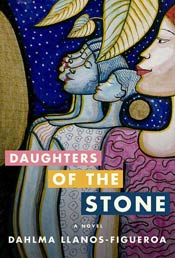The Best Poem Christianity produced?
In terms of artistic classification, it is a romantic poem. A romantic poem is not a ‘romance’ in the modern sense of the word; it is a poem that has spectacular, unbelievable content; it waxes over the exceptionality of the hero or heroes of the story and is spinkled with flights of fantasy. Sir Gawain contains trolls, a stunningly brave and strong knight (Sir Gawain), and a mysterious knight from afar who is colored entirely green (The Green Knight). The Green Knight loses his head to Sir Gawain when he trots in to Camelot on his horse one Christmas and challenges any knight to take one strike at him. Sir Gawain complies, but no sooner has the knight lost his head than he picks it back up, puts it back in it’s place, and challenges Gawain to come to his chapel a year later so he may have his chance to strike Gawain down. The remainder of the story follows Gawain’s adventures throughout the land of old England, until he comes to a Castle shortly before the Green Knight’s chapel, where he is taken in by the prince and his men who reside there for some time, and finds himself being tempted by a beautiful woman who is staying on the castle grounds.
The Christian aspect of the story comes in to play here: Gawain must resist the charm of this lady, while still honoring her. Giving in to lust would be a great sin, especially for a Knight, and especially at Christmastime. Gawain is careful not to let himself be wooed and this will ultimately influence the outcome of the story. For the real dilemma that runs as an undercurrent in Sir Gawain and the Green Knight is whether or not Sir Gawain can remain a moral, dignified person. In other words, a good Christian. The setting of the poem suggests a time when everybody was striving to be a good and moral Christian; people constantly bless one another and evoke the name of Jesus. The equivelants we have of Romantic stories today can be found in Hollywood. All superhero movies are romatic, as are the James Bond movies. But none of these stories evokes the same kind of entertainment Sir Gawain and the Green Knight evokes; superheroes and James Bond are more concerned with cynicism and occasional self parody, as if everybody involved in the story, both the characters and the creators, know that the sentiments being expressed are compeltely unfeasible. In these films, individualism trumps everything else. The conflicting emotions Batman feels, and the extravagent evil of the Joker are more important than how they relate to one another, or how people respect one another. Sir Gawain and the Green Knight stresses individualism, yet not as a trump to the rest of society; Sir Gawain is a respectful person who is helped along the way by numerous decent people. At the same time, delving in to Gawain’s personality is not important; his actions are. This is because Sir Gawain and the Green Knight is a classically romantic and very Christian poem. It managed to convince me that there was such a thing as Noble Entertainment, so to speak, and makes all the romantic stories Hollywood pours out seem positively godless. Recently, my Environment and Society class watched
Recently, my Environment and Society class watched 